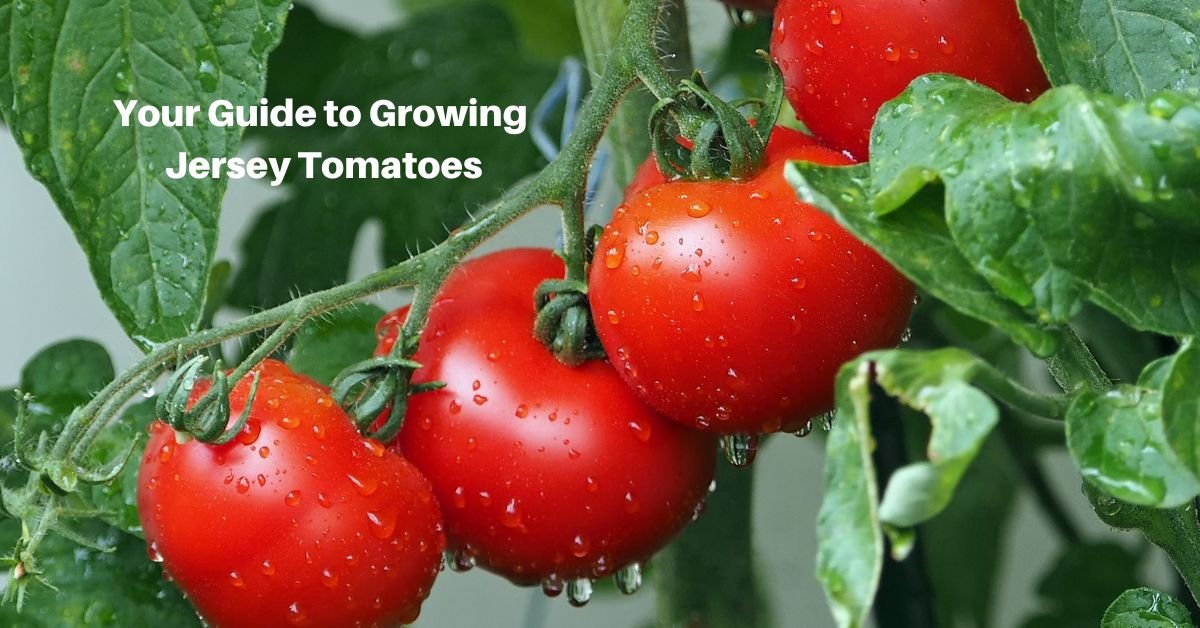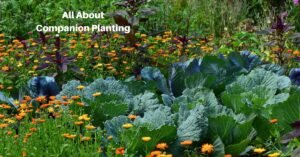When it comes to tomatoes that burst with flavor and juiciness, few varieties can match the reputation of Jersey tomatoes. Known for their rich taste and vibrant red hue, these tomatoes have won the hearts of gardeners and food enthusiasts alike.
If you’re looking to cultivate these luscious fruits in your garden, this article will provide you with a comprehensive guide on how to grow Jersey tomatoes successfully.
Ideal Soil and Weather Conditions
Jersey tomatoes thrive in well-draining, loamy soil that is rich in organic matter. Before planting, ensure that the soil is slightly acidic to neutral, with a pH level ranging from 6.2 to 6.8. Loamy soil offers the perfect balance of water retention and drainage, preventing the roots from becoming waterlogged.
In terms of weather conditions, Jersey tomatoes prefer a warm and sunny environment. These plants love the sun; they require at least 6 to 8 hours of direct sunlight daily to reach their full potential. Therefore, choose a location in your garden that receives ample sunlight and is protected from strong winds, which can damage delicate tomato plants.
Planting Time
The ideal time to plant Jersey tomato seeds or seedlings is in the spring, after the last frost date for your region. This typically falls between late April and early May. Cold temperatures can hinder the growth of tomato plants, so make sure the soil has warmed up sufficiently before planting.
You can buy seeds or seedlings from most garden shops. If you’re starting with seeds, consider starting them indoors about 6-8 weeks before the last frost date to give them a head start.
Sow seeds in seed trays with quality potting mix, maintaining consistent moisture and warmth around 70-75°F (21-24°C). After true leaves form, transplant seedlings to larger pots. Harden them off before outdoor planting.
Planting from seedlings is simpler. Purchase healthy seedlings or grow your own. Choose a sunny location with well-draining soil. Dig holes slightly deeper than the root ball and wider.
The plants should be spaced 24 – 36 inches apart. Gently remove seedlings from pots, place in holes, then fill the holes with soil. Water thoroughly and provide support as they grow.
Growth Time
From the time of planting, Jersey tomatoes take approximately 70 to 85 days to reach maturity and produce ripe fruit. This timeframe can vary depending on factors such as weather conditions, care, and the specific variety of Jersey tomato you’re growing.
Keep in mind that while some smaller varieties might mature slightly faster, larger beefsteak varieties may require a little more time.
Order Jersey Tomato Seeds Online
Watering And Fertilizing Your Jersey Tomato Plants
Once you plant your tomatoes, consistent and proper watering is crucial for their successful growth. Keep the soil consistently moist but not waterlogged. Irregular watering can lead to issues like blossom-end rot and cracking.
Water the plants at the base, directing the water towards the soil rather than wetting the leaves. A deep watering session once or twice a week, depending on the weather, should be sufficient. During periods of heavy rainfall, you may need to adjust your watering schedule accordingly.
Of course, good fertilization is important, too. Begin by preparing the soil with well-rotted compost or organic matter. Apply a balanced fertilizer with a higher potassium content to promote fruit development. Avoid excessive nitrogen to prevent excessive foliage growth. Apply the fertilizer around the base of the plants, following package instructions.
Regular watering and proper maintenance will help ensure healthy tomato growth and flavorful yields.
Providing Support to the Stalks
As Jersey tomato plants grow and produce fruit, they can become top-heavy and vulnerable to breaking under their own weight. To prevent this, it’s essential to provide proper support for the stalks. The most common method is to use tomato cages or stakes.
Place these supports at the time of planting to avoid damaging the roots later on. As the plants grow, gently tie the main stems to the stakes using soft ties or twine. This helps maintain an upright posture and encourages air circulation, reducing the risk of disease.
Protecting from Pests
Pests can pose a significant threat to your Jersey tomato plants. To protect your crop, consider implementing these preventive measures:
Mulching: Apply a layer of organic mulch around the base of the plants. This helps retain soil moisture, suppresses weed growth, and prevents pests from easily accessing the plants.
Companion Planting: Planting companion plants like marigolds, basil, and chives near your tomatoes can help repel common pests.
Regular Inspection: Regularly inspect your plants for signs of pests like aphids, tomato hornworms, and whiteflies. Early detection allows you to take swift action.
Natural Predators: Encourage natural predators like ladybugs and lacewings, which feed on common tomato pests.
Neem Oil Spray: If pest populations become problematic, consider using neem oil spray, a natural and organic solution that can deter pests without harming the environment.
Harvesting
The anticipation of enjoying homegrown Jersey tomatoes reaches its peak when it’s time to harvest. However, knowing when to pick them is crucial to ensure you enjoy them at their peak flavor. Here’s how to determine the right time to harvest:
Color: Jersey tomatoes should have developed their characteristic deep red hue, although some varieties might have orange or pink tones. Avoid harvesting green or partially green tomatoes, as they might not fully ripen off the vine.
Firmness: Gently squeeze the tomato. It should yield slightly to pressure without feeling overly soft. If it’s too hard, it’s not yet ready; if it’s mushy, it’s overripe.
Glossiness: Ripe Jersey tomatoes have a subtle sheen or gloss on their skin, indicating their juiciness and readiness for consumption.
Easy Removal: Ripe tomatoes should come off the vine with minimal effort when given a gentle twist.
Conclusion
Growing Jersey tomatoes can be a rewarding endeavor for gardeners of all skill levels. With the right soil, proper care, and attention to detail, you can enjoy a bountiful harvest of these mouthwatering and versatile fruits.
Remember to provide adequate sunlight, support for the stalks, and protection against pests to ensure the health and vitality of your Jersey tomato plants. With patience and dedication, you’ll soon be savoring the juicy flavor of your very own homegrown Jersey tomatoes.










